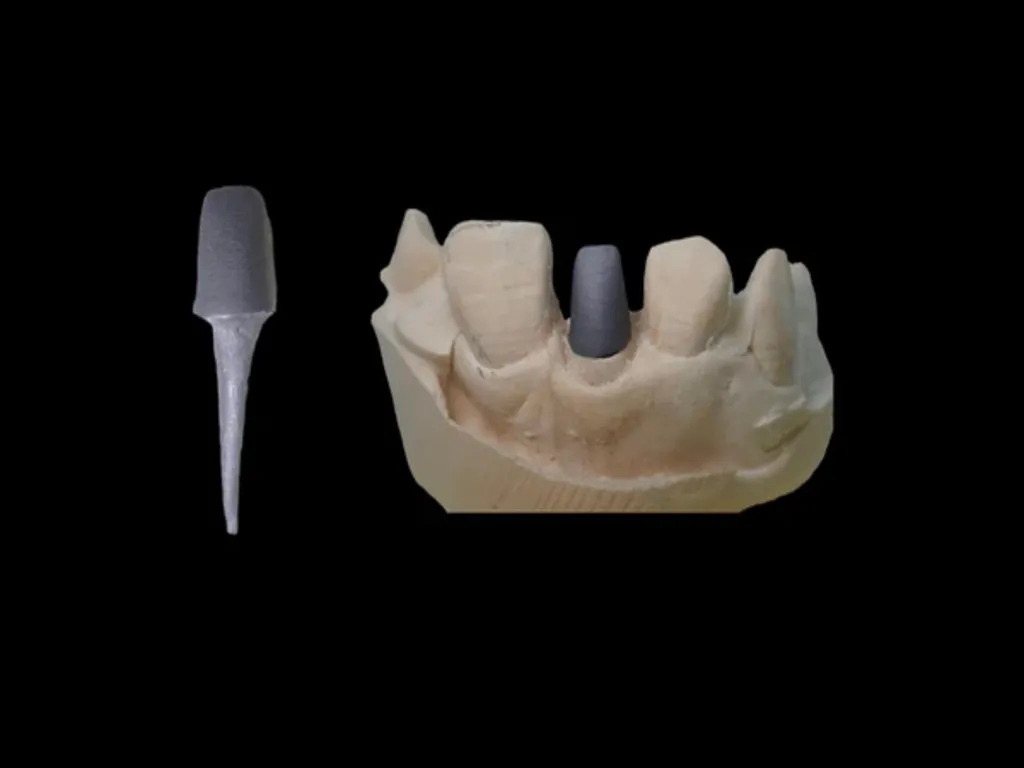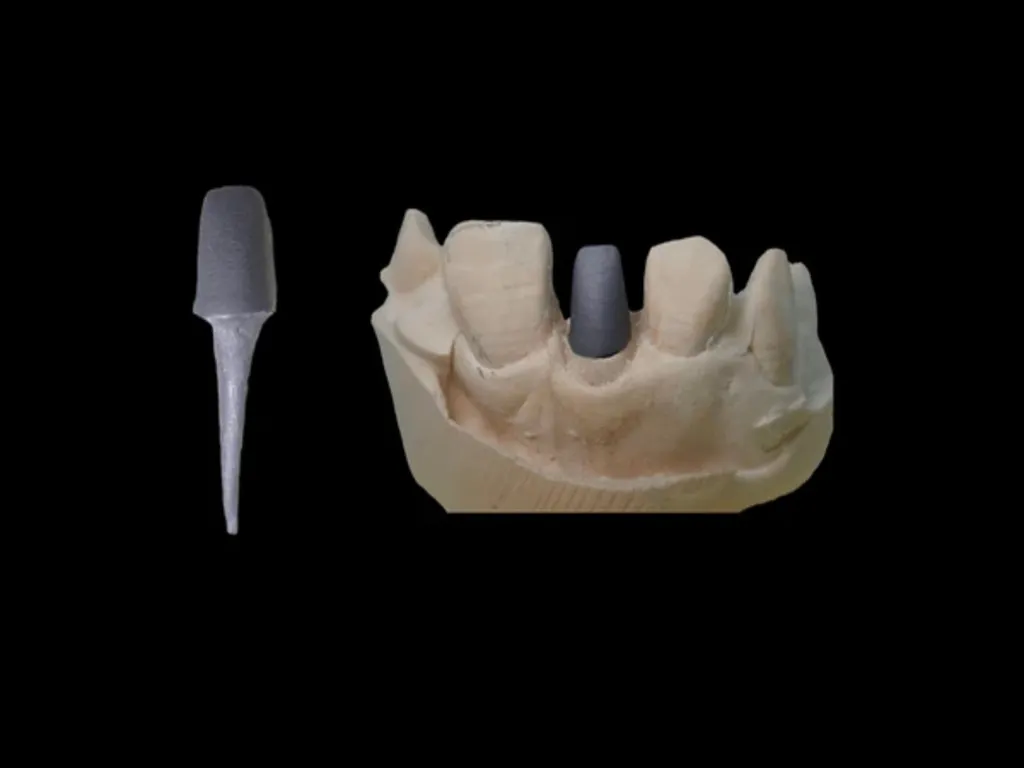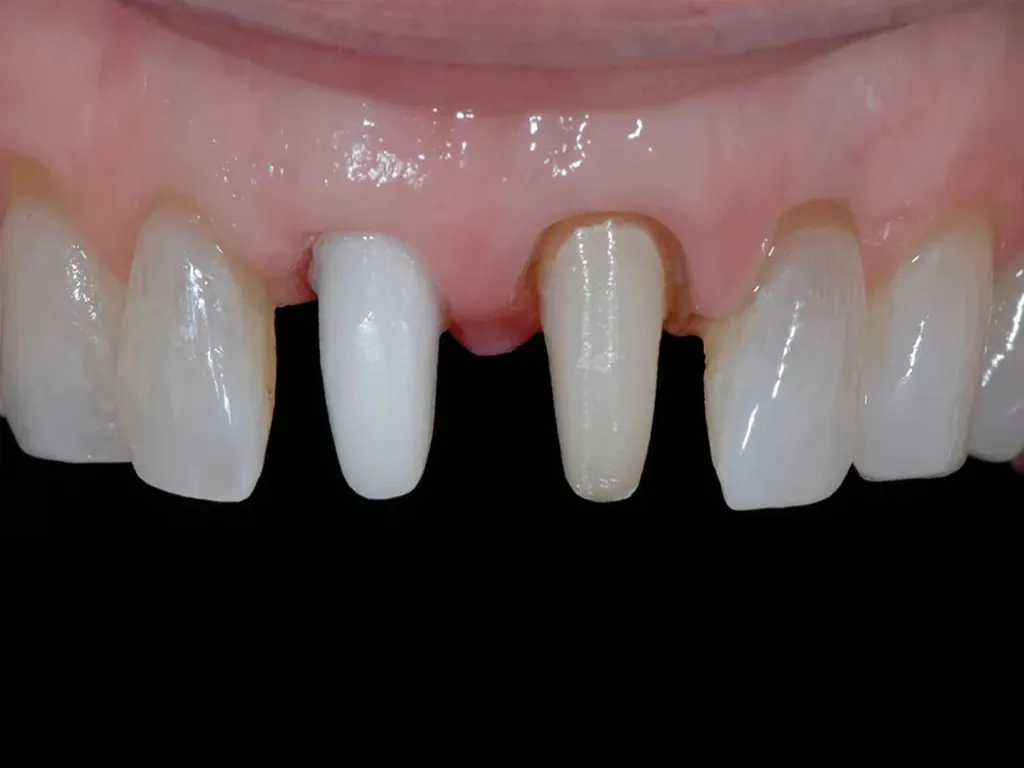Post Core Dental Lab
- 10+ years experience for China dental lab outsourcing services
- Processing 10,000 dental cases each month
- 4 days Turnround time
- 5 years warranty support
Raytops Post Core Dental
At Raytops, we design and craft high-quality post and core restorations. This process involves placing a small rod, known as the post, into the prepared root canal, while the core material is used to rebuild the decayed area. Together, the post and core provide essential stability and strength to support a dental crown or bridge.
While implant systems offer an alternative solution, they are often more expensive and require a longer treatment time. Raytops’ post and core restorations are a reliable and cost-effective choice for restoring function and maintaining oral health.
Featured Post Core Dental
Metal Post & Core
Cast or milled from non-precious or semi-precious alloys, our metal post & core restorations offer proven strength and long-term clinical reliability. Ideal for posterior zones or deep canal cases where retention and durability matter more than esthetics.
Use Case:
Root-canal-treated molars or premolars with minimal remaining structure and high functional loadingKey Benefit:
High fracture resistance and chairside adjustability; ideal under PFM or full-metal crownsRecommended For:
General dentists, DSO crown teams, or labs seeking cost-effective and robust post-core foundations for posterior cases
Zirconia Post & Core
Digitally milled from high-translucency zirconia blocks, this metal-free option supports esthetic restorations without compromising core integrity. Designed for anterior or premolar zones with visibility or metal sensitivity concerns.
Use Case:
Post-endodontic restorations in anterior teeth, especially where all-ceramic crowns are plannedKey Benefit:
High biocompatibility and seamless color integration under translucent crowns; excellent tissue responseRecommended For:
Cosmetic-focused clinicians, private practices, and partner labs offering full-ceramic solutions in esthetic regions
Post & Core Solutions. Lab-Fit. Root-Reliable.
Structural Support Starts at the Root – Custom Post & Core by Raytops
At Raytops, we produce custom-fit post and core restorations that rebuild endodontically treated teeth with strength, retention, and long-term support in mind.
Post & Core restorations serve as the foundation for future crowns — and when done right, they prevent fractures, dislodgement, and repeated failures. From canal preparation to crown placement, we work alongside clinics and labs to deliver precision-fit solutions tailored to root anatomy and material needs.
🧩 What We Deliver
Metal Post & Core
Cast or milled from high-strength alloys, ideal for posterior zones or cases with minimal esthetic demands. Proven reliability under load, easy chairside adjustability.Zirconia Post & Core
CAD/CAM milled for esthetic zones or metal-sensitive patients. Offers high biocompatibility, tissue-friendliness, and optimal color masking under all-ceramic crowns.
Both types are built to your prep pattern and canal dimensions — ensuring passive fit, optimal retention, and full compatibility with your final crown restoration.
✅ Why Raytops?
Fit-First Fabrication
Each unit designed from scan or analog impression, with margin, ferrule, and canal angles controlled digitally.Material Versatility
Whether you prefer full cast alloy or monolithic zirconia, we offer predictable strength-to-structure ratios based on tooth zone and prep type.Functional Design, Not Just Form
Post taper, length, and core bulk are calculated for real retention — not just placeholder shapes.Root-Focused Workflow
Seamless integration with crown workflow, matching margins, emergence profiles, and occlusal support.
Material Types & Comparison
Metal or Zirconia? Matching Post & Core Materials to Clinical Reality
Choosing the right post & core material impacts not just crown fit — but long-term success, esthetic outcome, and tissue health. At Raytops, we guide our partners based on prep, position, and prosthetic plan.
🔍 Material Comparison Chart
| Feature | Metal Post & Core | Zirconia Post & Core |
|---|---|---|
| Flexural Strength | Very High (>800 MPa, depending on alloy) | High (~900–1200 MPa) |
| Esthetics | Low – may shadow or reflect through crown | High – tooth-colored, ideal under ceramics |
| Biocompatibility | Moderate – some alloys may cause reaction | Excellent – inert, gingiva-friendly |
| Chairside Adjustability | Easy to trim, grind, polish | Limited – requires diamond tools, more brittle |
| Indications | Molars, deep preps, high-load zones | Anterior teeth, esthetic crowns, metal allergies |
| Workflow | Cast or milled from wax-up/model | Designed & milled from scan (CAD/CAM) |
| Cementation Compatibility | Conventional cements (GI, RMGI) | Adhesive cementation recommended |
🧩 Lab-Guided Selection Advice
If the prep is deep and occlusal load is high (molar): Go metal. It’s more forgiving, especially if margins are subgingival or ferrule is minimal.
If esthetics matter (anterior, premolar): Choose zirconia — especially when planning all-ceramic crowns. It blends with core and supports better gingival harmony.
If patient has known metal sensitivity: Go zirconia. We track material batches and can supply documentation for patient records.
If you’ll need to adjust intraorally: Metal is faster and more forgiving chairside — especially in multi-unit preps.
🧠 Lab Tip: Let us know the intended crown material (PFM, zirconia, lithium disilicate). We’ll design the core for optimal ferrule exposure and emergence profile to suit it.
Dental lab Digital Workflow
Precision Starts in the Canal – Raytops’ Workflow for Post & Core Restorations
Post & Core restorations demand more than just a fit — they require a workflow that respects root anatomy, crown strategy, and cement compatibility. At Raytops, we’ve built a canal-to-core process that eliminates guesswork and maximizes retention.
🧩 Our Digital Workflow, Step by Step
1. Data Collection & Prep Analysis
Accept STL/PLY files from 3Shape, iTero, Medit, or traditional impressions
Evaluate canal visibility, taper, depth, and ferrule height
Request intraoral photos for margin zone if gingival coverage is tight
2. Post & Core CAD Design
Canal geometry modeled in 3D for passive fit, retention grooves, and venting
Core morphology adapted for planned crown type (PFM, full-zirconia, E.Max)
Margin design adapted to your prep: shoulder, chamfer, or beveled
3. Material-Specific CAM Processing
Metal Post & Core: Wax-up → Press or mill from alloy based on span/load
Zirconia Post & Core: Milled from high-density blocks with precision pin fit
All post stems smoothed, vented, and edge-rounded to reduce stress points
4. Fit & Finish Check
Passive-fit verified on 3D printed internal root analog (lab-printed)
Core contours checked against planned emergence profile
Each unit polished and labeled with material type, patient ID, and quadrant
✅ Raytops Lab Differentiators
Root-Focused CAD Knowledge
Our designers are trained to build retention not just on core shape, but on canal taper behavior and cement flow.Margin Integrity Guarantee
Cores are finished to <30μm tolerance at margin, reducing crown misfit.Post-Ferrule Matching
We match core emergence to your prep ferrule — ensuring full coverage without crown overhangs.Cement Compatibility Mapping
We can pre-define post surface roughness or vent channels based on adhesive system provided.
🧠 Lab Tip: If you’re combining crown + post/core in one case, we recommend sending both scans upfront. We’ll co-design core emergence and crown margin for a seamless transition — with less chairside grinding.
Customization - Product Fits Reference
Customization That Supports Structure – Post & Core Design Built Around the Tooth
Every post & core case is a structural equation. It’s not just about fitting inside the canal — it’s about supporting a crown, matching the prep, and restoring bite forces. At Raytops, we customize every post & core based on what you prep, what you plan, and what your patient needs.
🦷 Canal-Adaptive Post Geometry
Taper Matching:
Each post is designed to your canal prep angle and verified against scan or model taper — reducing seating pressure and dislodgement risk.Length Control:
Post length adapted based on tooth length, remaining structure, and radiographic reference (if provided).Stress Zone Modification:
Rounded shoulders and venting grooves can be added for cases with known fracture risk (e.g., thin roots, history of post failure).
📐 Crown-Driven Core Customization
Ferrule Height Mapping:
Core emergence built to match shoulder/chamfer line, ensuring consistent 360° support for your crown margin.Anatomical Support Zones:
We reinforce core volume where crown connectors or pontic loads will apply (especially for bridges or splinted restorations).Cementation Flow Channels:
Optional internal relief and vent lines for better cement escape — especially useful in tight-fitting zirconia post cases.
🧩 Your Preferences, Remembered & Applied
Material-Specific Defaults:
We store whether you prefer high-opacity zirconia or standard alloy for post cases by zone (anterior/posterior).Margin Style Storage:
If your clinic consistently preps shoulder bevels or deep chamfers, we match that across cases.CAD/CAM Integration with Your Lab Team:
If you outsource crown work, we can align post/core designs with your crown lab’s emergence profile and contact zones.
🧠 Lab Tip: Let us know if you need diagnostic wax-up or crown stumps first. We can co-design core shape to follow future restoration path — especially useful for high-value anterior teeth or full-arch sequencing.
Clinical Applications & Indications
When Is a Post & Core the Right Choice? And How We Help Make It Work.
Post & Core restorations aren’t for every RCT case — but when used correctly, they can rescue compromised structure and prevent future failure. At Raytops, we assist clinicians and labs by matching post-core strategy to actual prep and occlusal needs.
🧩 Common Indications We Support
| Clinical Scenario | Recommended Post Type | Lab Considerations |
|---|---|---|
| Severely broken-down posterior with deep RCT | Metal Post & Core | Casted design with long passive stem, reinforced core bulks |
| Anterior esthetic case with thin labial walls | Zirconia Post & Core | Custom-tapered post, reduced light-blocking core |
| Lack of ferrule height on remaining structure | Metal Post & Core | Core flared to maximize prep contact; request gingival photos |
| Metal-sensitive or cosmetic-sensitive patient | Zirconia Post & Core | Biocompatible, shade-matched, digitally milled |
| Bridge abutment with post-retained terminal | Metal Post & Core | Core reinforced at connector zone, margin thickening |
| Temporary post to hold crown in provisional phase | Optional (resin/metal) | Request if temporary crown prep is pre-designed |
🔎 Risk Zones We Help You Control
Canal taper mismatch → We simulate insertion digitally and flag post binding risk
No or minimal ferrule → We adapt core height and shape to avoid crown rocking
Over-extended post risk → We base post length on STL depth + crown planning; alert if near apex
High bite force patient → We switch to bulkier core, shorter post, or suggest cast metal base
🤝 Lab-Coordinated Adjustments in Complex Cases
Multiple post-core restorations across arch → We stage seat order, sync margin lines, and contact emergence
Combo crown + post in same scan → We co-design crown margin to fit final core emergence
Esthetic zone / thin tissue cases → We soften emergence angle to prevent shine-through or core show
Post-over-core revision cases → We support reverse-scan & replica-fit from removed failed post
🧠 Lab Tip: For borderline cases (deep post, thin root, no ferrule), let us know your prep rationale. We’ll flag risk, suggest options, and adjust before it becomes a chairside problem.
Product & Material Selection Guide
Choosing the Right Post & Core – A Practical Guide for Labs and Clinicians
Not every endo-treated tooth needs a post. But when a post & core is required, the right material and design can mean the difference between long-term success and repeated chairside frustration.
Here’s how we help you choose smart, based on case type and restoration plan:
🔍 Decision Guide – Do You Need a Post & Core?
| Condition | Recommended Action |
|---|---|
| ≥ 2mm ferrule, strong remaining walls | Crown only – no post needed |
| Thin remaining walls, deep canal, no ferrule | Post & Core – consider cast metal |
| Esthetic zone, visible prep, full ceramic crown planned | Zirconia Post & Core preferred |
| Wide, short canal with minimal resistance | Post & Core – reinforce with passive taper and long stem |
| Short clinical crown, patient grinds at night | Metal Post & Core – high strength base |
| Multiple abutments with crown-bridge plan | Coordinate post-core with final bridge path |
⚙️ Material Selection Reference
| Factor | Choose Metal | Choose Zirconia |
|---|---|---|
| Functional loading (molars, premolars) | ✅ Best under compressive force | ⚠ Only if esthetic override required |
| Esthetics / translucency needed | ❌ May shadow through ceramic | ✅ High translucency, blends with crown |
| Patient metal sensitivity | ⚠ Use high-noble alloy or avoid | ✅ Biocompatible and inert |
| Core shape complexity / splinting | ✅ Easy to reinforce, adjustable | ⚠ More fragile under connector stress |
| Fast chairside adjustment needed | ✅ Quick polish & trim | ❌ Needs slow-speed, risk of fracture |
| Cement used: conventional | ✅ Compatible (GI/RMGI) | ⚠ Requires resin bonding |
🧠 Lab Support Highlights
Still unsure? Send us a photo + STL — we’ll flag risks and suggest the most stable option
Planning full crown restoration? We’ll adapt the core for ferrule line, emergence, and occlusal path
Need bridge + post in one case? We’ll help align connector zones and minimize seating conflict
Working with multiple labs? Let us align our post-core with your crown partner’s emergence profile
🧠 Lab Tip: The best post isn’t always the strongest — it’s the one that fits your prep, supports your crown, and seats without surprises.
Why Partner with Raytops for Removable Solutions
Why Work with Raytops for Post & Core Restorations? Because Precision Here Starts Below the Margin.
Post & core work isn’t about just filling a canal — it’s about rebuilding structure that supports everything above it. At Raytops, we approach every unit with full restoration intent, not just internal retention. Here’s how we help partners succeed:
🧩 What Sets Raytops Apart
✅ 1. Precision Fit, Root to Core
Each post modeled from real canal prep, verified with root analog or scan
Core margins aligned with your crown design — no overhangs, no “floating ferrules”
Passive fit digitally simulated before milling or casting
✅ 2. Full Crown-Ready Integration
Post-core units designed with crown margin, emergence profile, and occlusion in mind
When crown and post are submitted together, we co-design for cement gap, occlusal path, and margin harmony
Supports both analog + digital workflows, including STL crown design handoff
✅ 3. Low Remake Rate. High First-Seat Success.
<2.5% remake rate on post & core restorations
Margin QC, insertion path checks, and crown clearance control in CAD
Early detection of risky preps — we flag BEFORE fabrication, not after failure
✅ 4. Material Flexibility + Region Matching
High-quality CoCr/NiCr alloys for cast post & core
Multi-shade zirconia for anterior zone integration
Batch-controlled, CE/FDA-listed materials with documentation available on request
🤝 Supporting Your Workflow, Not Overwriting It
Multi-case batching & standardized preferences for DSO workflows
Labeling by quadrant, tooth ID, and crown integration plan
Design preview available for high-value anterior cases or post-splinted bridges
Optional pre-cementation polish, bonding guide, or seat model delivery
🧠 Lab Tip: Many remakes happen not from crown issues — but from post misfit. Our intake checks, insertion simulations, and ferrule-matching CAD reduce that risk from the start.
Real Cases. Real Results.
What Our Partners Say – Reliable Foundations Start with the Right Lab
Post & core restorations often carry more stress than size. That’s why our partners come to Raytops — to make sure what supports the crown is just as strong, functional, and predictable as the crown itself.
🇨🇦 Private Clinic | Ontario, Canada
Case: Zirconia post & core for maxillary lateral with all-ceramic crown
Challenge: Metal sensitivity, thin labial plate, esthetic zone crown
Raytops Solution:
Designed thin, tapered zirconia post with reduced opacity
Adapted emergence to crown margin and gingival contour
Delivered core pre-polished, ready for adhesive cementation
🗣 “Patient refused metal. Raytops made it look like it was part of the tooth.”
— Dr. J.P., Cosmetic Dentist
🇦🇺 Group Practice | Sydney, Australia
Case: Multiple cast post & core units for posterior bridge abutments
Challenge: Inconsistent ferrule across abutments, deep canals
Raytops Solution:
Flagged lack of ferrule in one site; confirmed with photo
Designed reinforced cores with extended shoulder engagement
Delivered crown + post-core as one unit, pre-coordinated
🗣 “Our in-house team said: ‘Best fitting bridge over posts we’ve seated in 6 months.’”
— Lead Prosthodontist, DSO Clinic
🇬🇧 Partner Lab | Manchester, UK
Case: Recurrent failure of a third-party zirconia post in central incisor
Challenge: Loose fit, over-polished surface, repeated crown dislodgement
Raytops Solution:
Reverse-scanned old post + core from clinician
Rebuilt with passive taper, added surface roughness zone
Delivered with optional bonding guide and seating pin
🗣 “Our remake rate dropped off a cliff once we switched to Raytops for post cases.”
— Lab Director, Crown & Aesthetic Lab
🧠 Lab Insight: A crown only works if the core beneath it holds up. Our partners stay because we make sure it does — case after case.
Certifications & Regulatory Assurance
Certified. Traceable. Ready for Global Delivery.
Whether it’s a cast metal post for a molar in California or a zirconia core for an anterior crown in Berlin, our restorations meet international medical device standards — with full documentation to support your workflow, registration, and patient trust.
✅ What We Comply With
ISO 13485 Certified QMS
Our production process for post & core restorations operates under ISO 13485: medical-grade manufacturing protocols, covering traceability, risk control, and documentation.CE Marking (MDR 2017/745)
All zirconia and cast post & core units are classified and registered as Class II dental restorations under EU MDR. Each shipment includes DoC and label.FDA Registered
Our indirect restorations are FDA-listed, including zirconia and metal-based post & core products. Documentation available for clinic import, inspection, or recall control.Biocompatibility Testing
Materials used (zirconia blocks, alloys) tested for cytotoxicity and tissue response via third-party labs (SGS, PONY, etc.). Reports available on request.
📦 Documentation Included with Shipment (on request or by default)
Material batch certificate (e.g., CoCr or zirconia block lot no.)
Declaration of Conformity (CE)
Certificate of Origin + HS code
FDA listing document
Instructions for Use (IFU) in English or localized version
UDI label (for distributors / DSOs requiring digital trace)
Optional: OEM or private label marking for partner branding
🌍 Trusted by Global Partners Who Need Compliance
DSOs using centralized import for multi-location operations
Distributors needing post-core kits for implant/crown packages
Labs outsourcing post & core under their brand with full documentation
🧠 Lab Tip: Let us know your destination country or documentation needs — we’ll bundle what your local authority or regulatory process requires.
Frequently Asked Questions
Frequently Asked Questions – Post & Core Workflow with Raytops
❓ What type of impressions or scans do you accept for post & core?
We accept STL, PLY, and OBJ files from all major intraoral scanners. For analog submissions, a clean model with visible canal path and ferrule is required. For deeper canal cases, a putty pickup of the post space is recommended.
❓ Can you help me decide between zirconia and metal?
We do not diagnose or prescribe, but we’ll advise based on your prep, photo, scan, and intended crown material. We often flag esthetic or strength-based risks and suggest options with pros/cons.
❓ How do you design the post length?
Post length is determined by canal scan or model depth and adjusted to avoid apex contact. We maintain passive fit zones and flag any excessive depth concern.
❓ Do you polish or roughen the post surface?
Yes — zirconia posts are delivered with mild surface texture for bonding. Metal posts can be delivered polished or micro-roughened based on your cementation preference.
❓ Can you deliver the post-core with the crown?
Absolutely. If you submit both post-core and crown prep scans together, we design them in tandem — ensuring emergence, ferrule height, and margin continuity.
❓ Do you provide seating models?
Yes, on request. We can deliver 3D printed root analogs for passive-fit verification, or stone models for chairside guidance.
❓ What’s your typical turnaround time?
Standard turnaround is:
Metal Post & Core: 4–5 working days
Zirconia Post & Core: 5–7 working days
Rush cases are available — let us know your deadline.
❓ What if the post doesn’t fit?
If the post doesn’t seat due to lab-side fit issue (not prep error), we remake at no charge. We request return of original to assess insertion resistance and adjust design protocol.
🧠 Lab Tip: Always include intraoral photos if prep margins or canal paths are not well captured — we’ll flag any concerns before fabrication starts.
Trends & Future Outlook in Implant Restorations
Post & Core Is Evolving — And So Are We
Post & core restorations used to be a static, analog-driven process. Today, they’re becoming dynamic, digitally integrated, and expectation-heavy. At Raytops, we don’t just manufacture post-core units — we evolve with the way they’re planned, prescribed, and placed.
🔄 1. Digital-First Post & Core Workflows
Clinics are moving from impression-based post patterns to full digital scan + crown co-design workflows.
Intraoral scans now routinely capture canal prep and ferrule zones
Digital insertion simulation reduces chairside adjustment
3D-printed analogs allow passive-fit check before cementation
🧠 Raytops Response:
We’ve fully digitized our post-core CAD process, accept all major scanner outputs, and simulate seating resistance pre-fabrication.
🦷 2. Zirconia Dominance in Esthetic Zones
With the rise of full-ceramic crowns, more anterior cases demand metal-free post & core solutions that match translucency and avoid gray shine-through.
Labs now co-design post-core + crown emergence
Adhesive bonding systems improve zirconia retention predictability
Gingival response favors biocompatible, low-irritation materials
🧠 Raytops Response:
We offer multi-shade zirconia, bonding-surface prep, and full emergence planning — integrated with crown margin control.
🧪 3. Surface & Cementation Science Gains Traction
It’s no longer enough to “fit” the post — now labs and clinicians collaborate on cement path, venting, and surface behavior.
Micro-retention textures, relief grooves, vent lines
Adhesive compatibility testing
Cement-thickness prediction via CAD
🧠 Raytops Response:
We support customized surface prep (polish vs. etched vs. rough), and help pre-stage venting for resin cement escape.
🌍 4. Global Workflow Integration
DSOs, cross-border labs, and regional distributors now demand:
Consistent fit across multiple locations
Custom protocols remembered per group
Unified documentation and regulatory compliance
🧠 Raytops Response:
We offer protocol tagging by group, quadrant-specific labeling, and UDI/tracing per shipment — whether for Sydney or Seattle.
🔚 Looking Ahead: Structural Precision Is the New Standard
As restorative dentistry shifts toward minimal prep and maximum predictability, the demand on post & core quality rises — not falls.
At Raytops, we’re committed to making sure what sits below your crown is every bit as modern, precise, and reliable as the crown itself.




